But I'm getting ahead of myself.
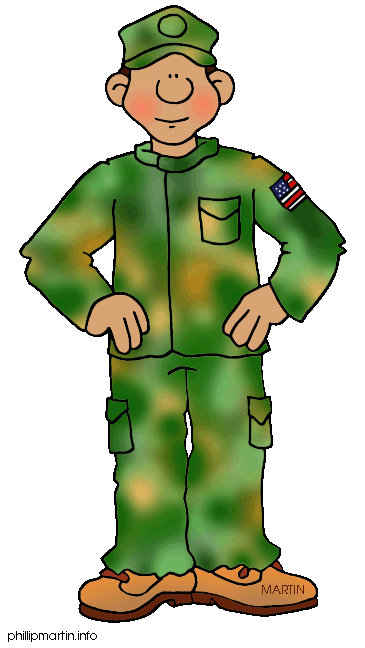 |
Sir, may I see your
authority to enter,
access badge, or
military ID card?
|
In the Air Force (my Alma Mater), we took turns standing watch as "dorm guards." It was a two hour shift, and what you mostly did was stand by the door, and guarded it. If someone came to the door, the dorm guard had to determine if that person could come in. Other Airmen in your dorm, and your Sergeants, can be allowed in on personal recognition. Others, such as the officers, are on the admittance list, and can be allowed into the dorm (after showing ID). Others must have a pass from the CQ (and ID), otherwise they don't come in.
Training continues while you are in technical school, and when you get to your first duty assignment you get trained again.And you also do "fire watch" every half hour by walking around the dorm and making sure nothing (or nobody) is on fire.
Repeatedly.And because of the nature of my equipment (secured and classified communication devices), I along with the other members of my repair shop to which I was assigned were expected to maintain a higher level of security than, say, the chow hall cooks.
The facility in which I worked was, due to the nature of some of the equipment we repaired and maintained, a secured compound. The area was surrounded by a high fence (topped with concertina wire) with a gate secured by a solid combination lock. The building (our shop) was made of cinderblock, windows covered with bars, and a thick wooden door, also secured by a combination lock
We were secure.
 And as a secured area, we would periodically and randomly be checked by security people to confirm that we were complying with all security regulations and procedures. A routine procedure, they (security people) would stop by (unannounced) and check on us - sort of like the (Monty Python version of) the Spanish Inquisition.
And as a secured area, we would periodically and randomly be checked by security people to confirm that we were complying with all security regulations and procedures. A routine procedure, they (security people) would stop by (unannounced) and check on us - sort of like the (Monty Python version of) the Spanish Inquisition.Nobody expects the Spanish Inquisition.
(Monty Python fans will know what that means)So what happened was this:
I was busy with about 4 dozen PRC-68 portable radios, trying to a) do a routine maintenance inspection, b) repair non-functioning PRC-68s, and c) instruct two airmen just out of tech school on the PRC-68s.
And that's when the SP Sergeant arrived for his routine security check.He check the perimeter, the files, etc. Then decided to go around and ask a few random questions, just to see if we were all up to date on security procedures. And he decided to start with me.
I didn't mind the checks, but could he not see how busy I was?The SP Sergeant came over, and asked me a few "what if" questions in order to test my knowledge of security procedures.
This (roughly) is the dialog that transpired:SP: Scenario - You find a hole in the fence. What do you do?
ME: Post a man to guard the hole, then contact the SPs to report a possible intrusion.
SP: And what's number would call?
ME: Nine. One. One.
Duh!SP: Do you know the actual number for the SP squadron?
No, I don't. That's why we have "nine one one".ME: No, but we have the number attached to all the phones in this building, plus it is on the list of emergency numbers on the wall.
I notice at this point that the shop chief (MSgt Garrett), has emerged from the office and is listening.SP: Suppose you look out the window and saw an intruder hacking at the cables on the antennae tower with an ax, what would you do?
The intruder must have come through the hole in the fence.
 |
Remember Primitive Pete
from the safety film that
your shop teacher showed
on the first day of class?
|
ME: Go get a hacksaw from the tool cabinet.
The look on the SP's face was priceless.
So was MSgt Garrett's
SP: Why a hacksaw?
The Sergeant was stunned into silence.
Behind him, I could see Master Sergeant Garrett showing signs of what might be a stroke.ME: The proper tool for the proper job.
After a few moments, I gave another answer (the correct one). But for some reason, the security person didn't want to ask me any more questions.
MSgt Garrett did.GARRETT: Why the hell do you do say @#$% like that?
Because I can?
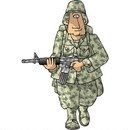 So what happened was this: So what happened was this:Three VIPs (two men and a women) from Washington D.C. were visiting our base on official business. While they were there, Brigadier General Hoffman (the Vice Commander of the base) took them on a tour of the base. And they had to have been important VIPs for the General to have conducted the tour himself.
No tour of the base would truly be complete without visiting what was referred to as the C-5 area, a collection of facilities and buildings, the centerpiece of which was the ginormous repair hanger.
By "ginormous", I mean humongous. You could easily lay out a regulation (NFL) football field inside. And seating for the spectators. 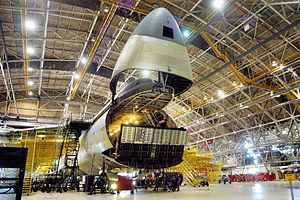 The reason for the ginormousness of the hanger is that it was where they maintained and repaired the ginormous C-5 Galaxy transport. The reason for the ginormousness of the hanger is that it was where they maintained and repaired the ginormous C-5 Galaxy transport.
The C-5 area was also a secured area, meaning it had its own perimeter fence, detection equipment, and there was always a force of security policeman monitoring security. The reason for this security is that in adition to the C-5 Galaxy, the hanger was also used to maintain and repair the B-52.
Needless to say, security was tight. The C-5 area was classified as a yellow zone.General Hoffman, for reasons only know to him, decided to enter the C-5 area (a Yellow Zone) without going through the established entry point. Not good.As the General escorted the VIPs into the C-5 area, they were observed by Airman 1st Class Brumble, a member of the Security Police Squadron and part of the detail assigned to guard the perimeter of the C-5 area at the time Hoffman decided to bypass the entry point. 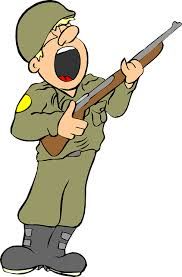
|
Before I go further , I'll need to explain yellow and red zones.
And while I'm at it, I should explain about SP training.SPs, or Security Police (now called Air Force Security Forces) are the Air Force equivalent of MPs and were responsible for the security of Air Force bases and equipment. The SP school is on Lackland AFB, which is where SP students learn all about security, law enforcement, weapons, tactics, etc. Part of that training is learning how to guard things, and the SP students learn how to do this by going out and guarding dead planes.
Yes, Dead Planes.
The SP school has a training area which is a mock-up of a tarmac (more or less), simulating where planes are parked which need to be guarded. The planes, however are not the B-2, F-15, and other current aircraft, but rather an assortment of planes from the 1960s (and older) in which the engines, electronics, and everything else of value has been removed, leaving only the outer shell of an aircraft that makes it's final contribution to the defense of our country by pretending to be a real plane, guarded by a student pretending to be a real SP.
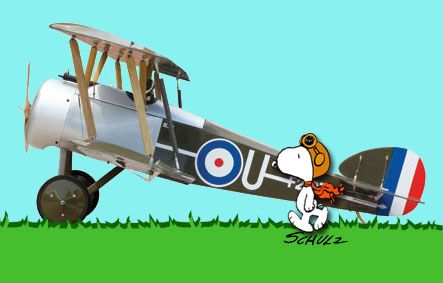 Each plane is "parked" in a separate bay. Around each plane there are two circles: an outer yellow circle and an inner red circle. These represent the "Yellow Zones" and "Red Zones" which indicate the level of security, and the appropriate response by the SP (or, in this case, the student). The appropriate responses are:
Each plane is "parked" in a separate bay. Around each plane there are two circles: an outer yellow circle and an inner red circle. These represent the "Yellow Zones" and "Red Zones" which indicate the level of security, and the appropriate response by the SP (or, in this case, the student). The appropriate responses are:Yellow Zone:
Give warning, and order the intruder to the ground.
Red Zone:
Shoot. The intruder will fall to the ground on this own.
Regardless of the rank or status of the person violating security, if security is violated, the SP will "jack-up" the offender. Properly trained, a SP will order Jesus himself to lay face down on the ground if he appeared out of nowhere, and happened to be standing in a Yellow Zone.And they will shoot. Anyone.
Heaven help us if the Prince of Peace appeared in a Red Zone.And this was before 9-11. I can just imagine how much more intense SP training has become since.
 |
| Famous former Air Force SP: Carlos Ray "Chuck" Norris |
As a collateral duty, I was a security police augmentee. That's the Air Force's equivalent of the Police Reserves. In the event of an emergency (or, more often, when the base went on alert, or was engaged in an execise) I would often get a call to report to the SP squadron. After checking in, I would report to the armory where I would be issued:
- Helmet
- Flak Jacket
- Web Belt
- M16A1 Assault Rifle
- 80 rounds of 5.56×45mm NATO (4 clips with 20 rounds each)
After being issued the equipment, I would return to the "squad room" and wait.
And wait.
And wait.
Sometimes we would actually go out and guard something, or otherwise assist the SPs. Usually though, after we were activated, checked in, and issued gear, whoever activated us would forget that we were activated, and we would sit in the "squad room" until the alert/exercise was terminated, at which time we would return the gear and get dismissed.
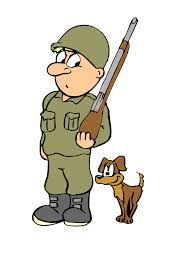 During one of the alert exercises in which I was activated as a Security Policeman (and actually posted) I was posted to gate 17B. Like many of the gates, this one was normally unguarded, closed, and secured by a combination lock. Ironically, this was a gate I was more than familiar with as it lead to the base's Air Traffic Control Tower. Being a Radio Repair Technician, I used this gate frequently as there are a plethora of radios and related equipment in the tower.
During one of the alert exercises in which I was activated as a Security Policeman (and actually posted) I was posted to gate 17B. Like many of the gates, this one was normally unguarded, closed, and secured by a combination lock. Ironically, this was a gate I was more than familiar with as it lead to the base's Air Traffic Control Tower. Being a Radio Repair Technician, I used this gate frequently as there are a plethora of radios and related equipment in the tower.I even knew the combination to the lock on the gate.
I knew most of the people who would come through the gate. In theory, I was suppose to check their badges as the came in, but as I knew them (and knew they were authorized to be in there) there really wasn't much point to that. I just waved everyone through.
Except TSgt McMinn - my supervisor.
 McMinn rode up in the pick-up truck (Ford Ranger), parked, exited the truck and came over to the gate. It wasn't until her had opened the gate and crossed into the secured area that I informed him that he was not wearing his access badge.
McMinn rode up in the pick-up truck (Ford Ranger), parked, exited the truck and came over to the gate. It wasn't until her had opened the gate and crossed into the secured area that I informed him that he was not wearing his access badge."Mac" where is you access badge?"And we were technically in a yellow zone
He glanced down, and realized it was not pinned to his shirt.
It was (no doubt) in the truck, clipped to the visor."Mac" I informed him "you do realize that I am required to jack you up and wait for the sergeant of the guard to come and clear you."
He gave me that you wouldn't dare look.
And yes, I would."Doug" he informed me "you do realize this exercise will end, after which you will have to returned to your regular duties."
I hesitated for a moment."I have got a lot of extra duties back at the shop that need to be done."
I tried to stand firm, but..."O.K." I relented "Go get you badge"
"The better part of valor is discretion,
in the which better part I have sav'd my life."
~ Henry The Fourth, Part 1, Act 5, scene 4



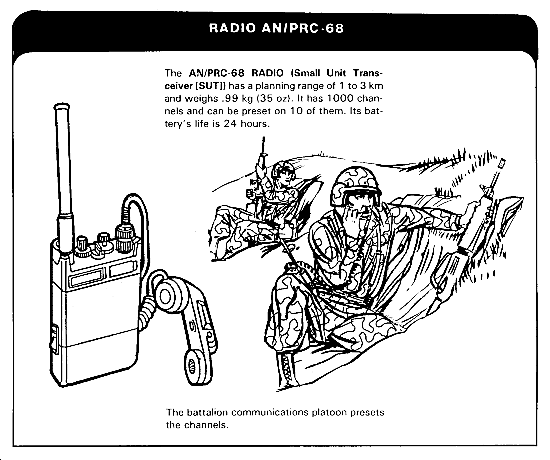

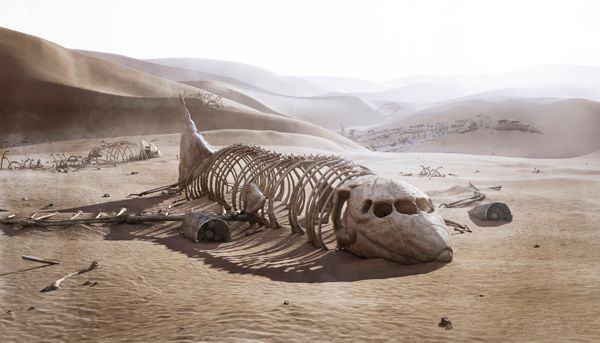
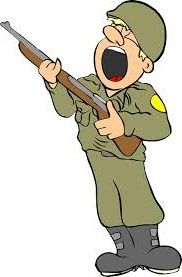
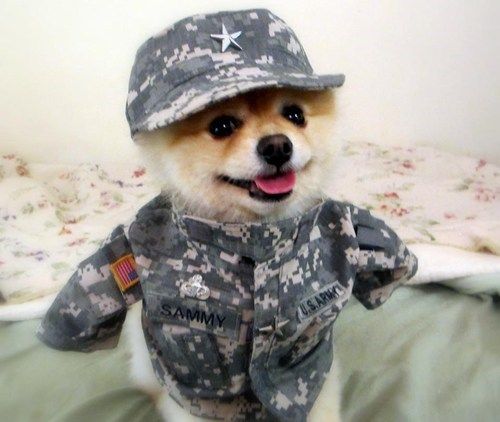

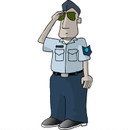
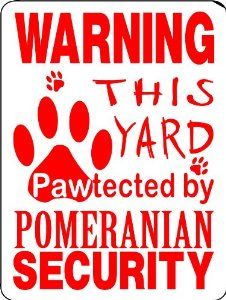

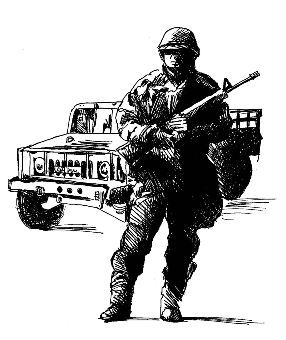
No comments:
Post a Comment